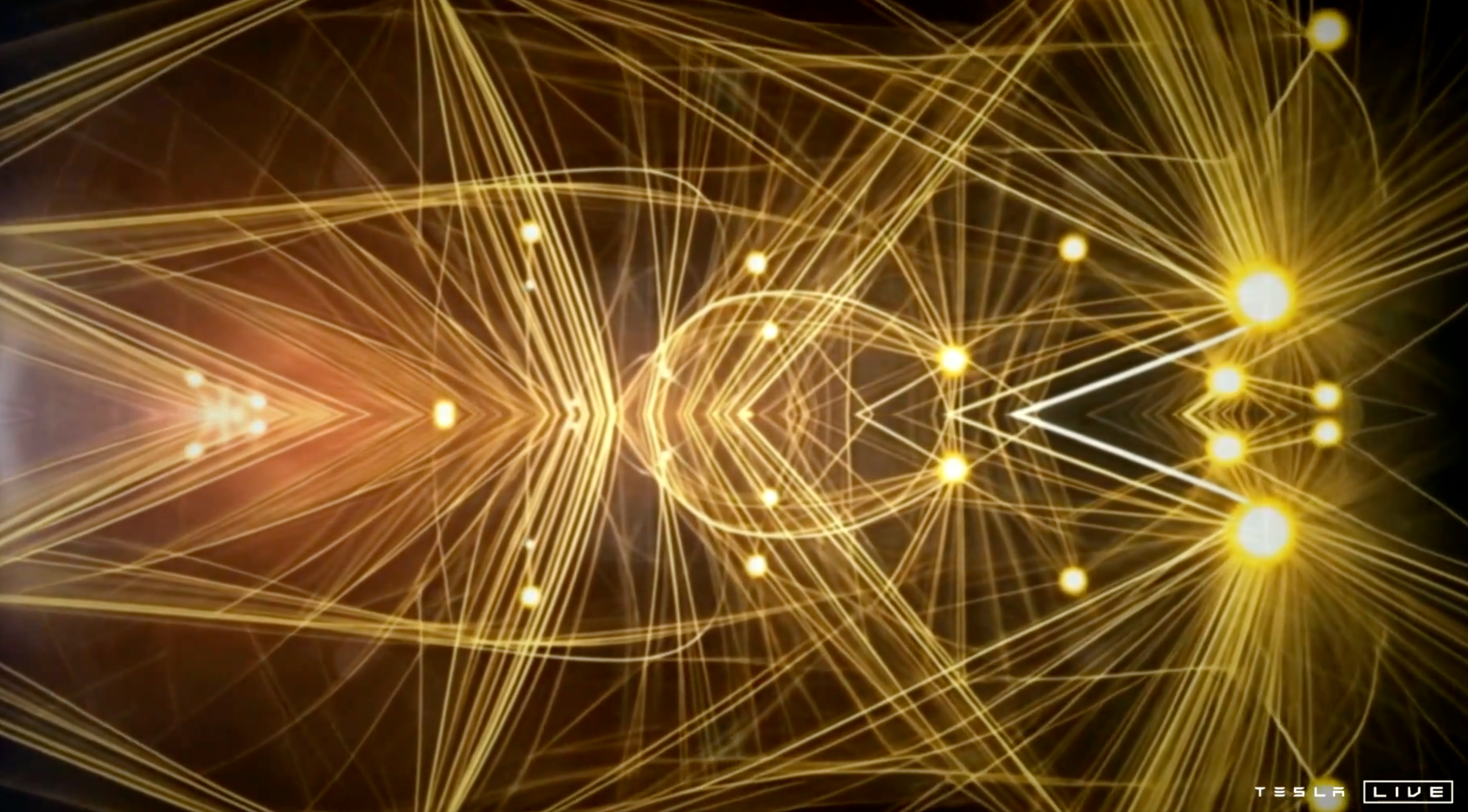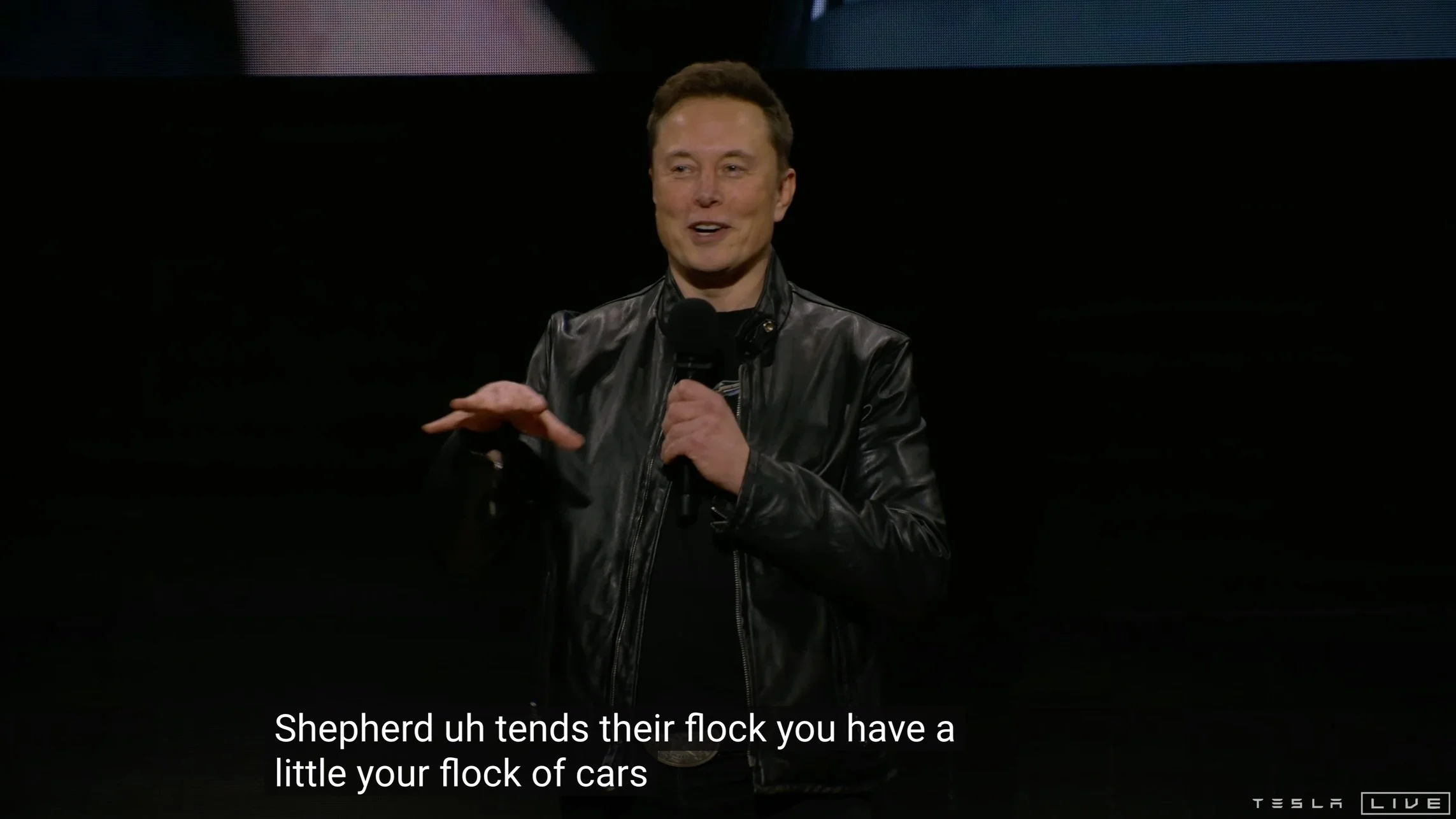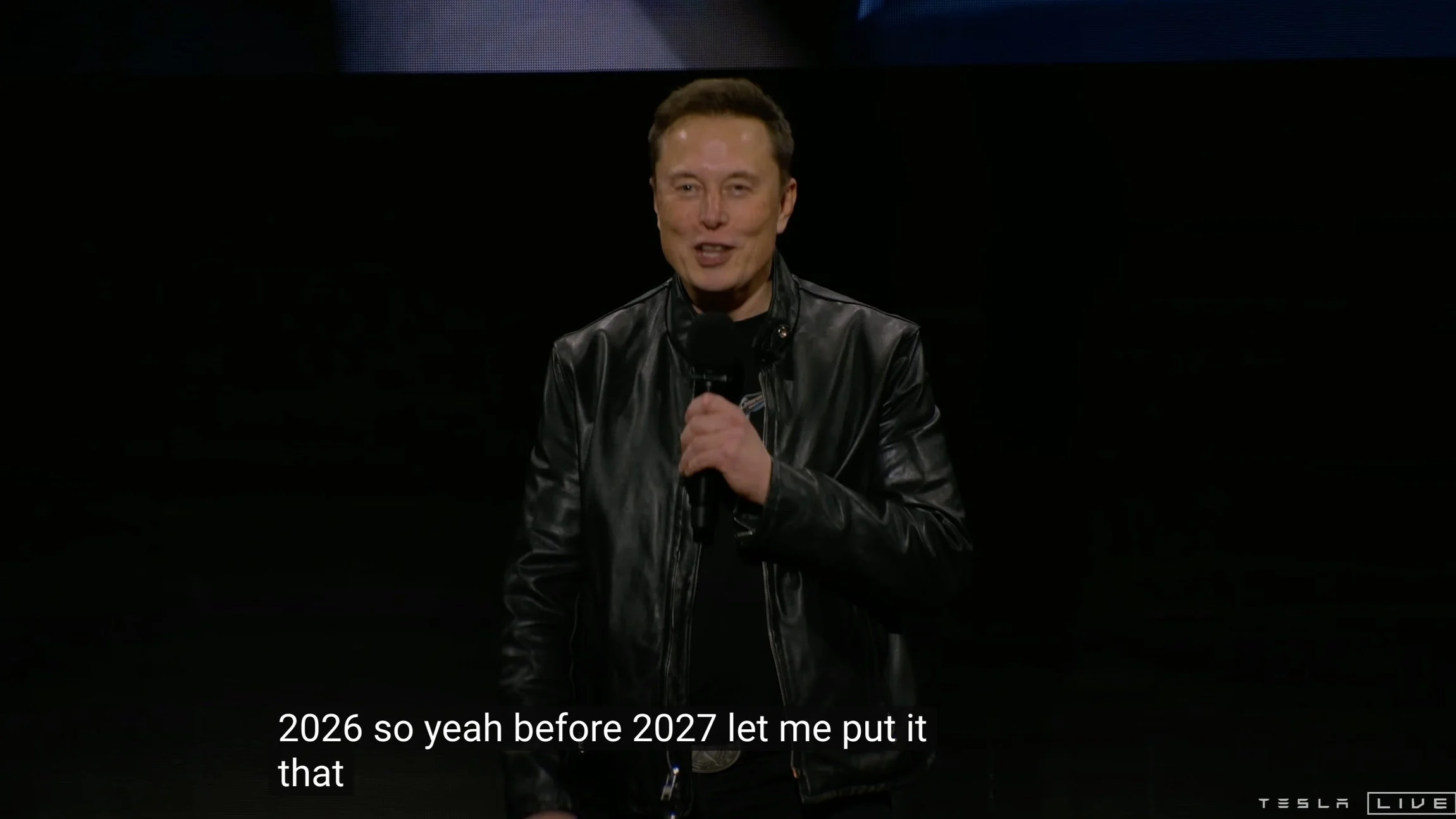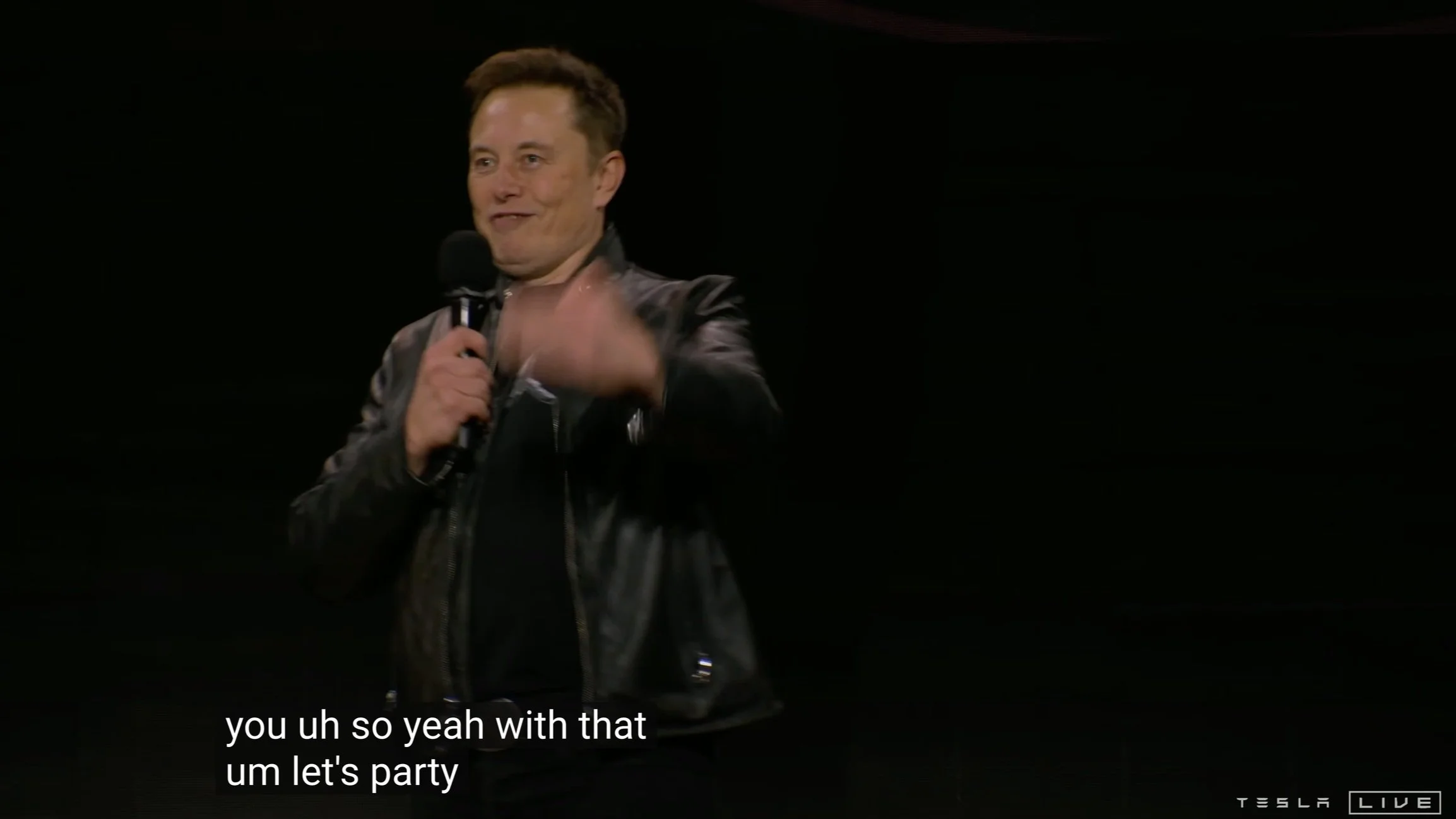Avoiding Your "We Robot" Moment: Lessons in Futurecasting
Image: Tesla
Amidst the golden age of technology innovation, even the most exciting product launches can go a bit haywire, as seen with the Tesla "We Robot" event, which turned a few heads—but not quite in the way they intended. Avoiding your own 'We Robot' moment requires more than just printing some t-shirts, pulling an all-nighter, and hoping for the best before more than 2.5 million people log onto your streaming feeds. I believe the brand deserved far more preparation and attention to detail. With lessons gleaned from Tesla's ambitious yet rocky introductions, this guide is here to help you navigate the thrilling yet treacherous waters of product launches. We'll explore how leveraging the setting of realistic expectations, effective communication, and robust preparation can transform market naysayers into feverish ambassadors– giving your futurecast visions the best chance of becoming the exciting reality that they promise to be!
How it went down…
Disrespected the audience
Image: Tesla
At the heart of Tesla's "We Robot" miscue was a glaring lack of preparation in certain areas, which is a surefire way to alienate an audience. Literally millions of people eagerly logged in to witness what promised to be a technological marvel, only to see technical hiccups and awkward pauses instead of a sleek, well-choreographed, inspiring presentation.
Preparation is not just about having a backup plan; it's about understanding your audience and ensuring every detail is meticulously planned to match their expectations. When a brand doesn't deliver on its promises, it compromises its authenticity and credibility. Tesla's misstep serves as a reminder that thorough rehearsals, contingency plans, and attention to detail are crucial in respecting the audience and maintaining trust. This dedication to preparation ensures that your product launch is not only successful but also memorable for the right reasons.
Starting late is more than just a scheduling blip; it's a trust breaker, especially when over 2.5 million people are eagerly waiting. Tesla's "We Robot" event began an hour behind schedule, leaving a vast audience in limbo, wondering if they were in the wrong place, and if the event was happening elsewhere. This delay not only tested the patience of viewers but also risked diminishing the excitement built around the event.
Punctuality in product launches isn't merely about timekeeping; it's a reflection of professionalism and respect for the audience. Those attendees have invested their time and interest, anticipating a seamless experience. By starting on time, a company honors that investment, creating a positive, respectful interaction. Tesla's tardiness serves as a cautionary tale; maintaining a tight schedule is crucial for effective communication and upholding brand integrity. Ensuring timelines are respected can be the difference between a memorable launch and an apologetic explanation. Proper planning and time management are key to avoiding such pitfalls.
Poor presenter communication
Image: Tesla
Effective communication is the cornerstone of a successful product launch. During Tesla's "We Robot" presentation, this was a glaring mistep that is all too common for Elon Musk presentations– leaving the audience confused rather than captivated. When presenters fail to articulate the vision clearly, particularly when that presenter is the CEO of of the company, it diffuses excitement and can lead to misunderstandings about the product's capabilities. This didn't need to happen.
“I don’t know, they could manage a fleet of cars, you know, take care of them like a, like a… shepherd uh… tends their flock.” –Elon Musk
A presenter’s role is to not only inform but also inspire confidence and enthusiasm. Tesla's event highlighted the critical need for presenters who can convey complex ideas in an engaging and accessible manner. Without clarity and confidence in delivery, even the most innovative products can seem lackluster. It's essential to rehearse thoroughly and prepare presenters to handle the content, and any unexpected issues with poise and confidence.
Over-focused on the WHO, not the WHAT
In Tesla's "We Robot" event, the emphasis was misplaced, focusing more on the main personality behind the scenes, namely Musk, rather than the groundbreaking technology itself. While knowing who is involved can add a layer of credibility, it shouldn't overshadow the product's features and potential impact.
Audiences attend product launches to discover innovations, and meet the faces behind them, not just hear from the . By concentrating too much on Musk, Tesla missed an opportunity to deeply engage the audience with the robot's capabilities, advancements, and practical applications. This approach can leave attendees feeling disconnected from the core message, which should ideally be centered around the product's unique benefits and transformative possibilities, not trying to hang onto every word that the CEO is spewing nervously on stage.
A well-balanced presentation that highlights both the innovation and the team can foster a more holistic understanding and appreciation. By ensuring that the product remains the hero of the narrative, companies can better convey their vision and promise, cementing the product's relevance in the market when it finally arrives.
Set unrealistic, yet distant expectations
Image: Tesla
One of the pitfalls of Tesla's "We Robot" launch was setting expectations that were both unrealistic and too distant, without communicating near term milestones on how we will get there. While ambitious goals can generate excitement, they also risk disappointment if they seem unattainable or are perceived as marketing promises that won't be fulfilled. Audiences are savvy, particularly technology audiences, and can quickly spot when a vision lacks a tangible path.
By projecting lofty expectations without a clear timeline or actionable steps, Tesla inadvertently fostered skepticism. This approach can erode trust, making it challenging for even the most innovative companies to rally support. It's crucial to strike a balance between visionary goals and practical roadmaps, and sound communication practice is the key.
Providing concrete milestones and a realistic timeline can help manage expectations and build credibility. Clear, achievable objectives allow audiences to envision the journey and the role they might play in it. By grounding visions in reality, companies can inspire confidence and foster a deeper connection with their audience, paving the way for authentic engagement and support.
Forgot the online audience
Image: Tesla
Tesla's "We Robot" event highlighted a crucial oversight: failing to engage the online audience effectively, all 2.5+ million of them. In today's digital age, virtual attendees represent a significant portion of any event's audience. Yet, Tesla's presentation did not capitalize on opportunities to interact with those tuning in remotely. Without engaging content or interactive elements, the online experience can feel passive, prompting viewers to disconnect or lose interest.
Engaging online audiences requires more than just streaming a presentation. It involves integrating interactive features like live Q&A sessions, polls, or social media interactions that make virtual participants feel involved and valued. By fostering a two-way conversation, companies can maintain viewer interest and encourage active participation.
Creating a dynamic online experience not only extends the reach of the event but also builds a community around the product. This engagement strategy transforms viewers into active contributors, enhancing the overall impact and reception of the product launch.
Mic drop, not really…
Image: Tesla
Ending an event without a clear call-to-action is like leaving a conversation mid-sentence. Tesla's "We Robot" launch concluded abruptly, missing a critical opportunity to guide the audience on the next steps. A well-crafted call-to-action (CTA) can transform curiosity into engagement, providing the audience with a clear path to follow, whether it's signing up for updates, participating in discussions, or exploring detailed product information.
Without a CTA, the momentum generated during the presentation dissipates, leaving audiences unsure of how to channel their interest. A strong conclusion should reinforce the event's key messages and invite the audience to continue the journey with the brand. Instead, Tesla through a party at Warner Brothers Studios, and made everyone else just watch. It felt like a poorly run, televised New Year's Eve broadcast from Times Square, NYC.
Implementing a CTA not only extends the dialogue beyond the event but also helps maintain interest and engagement. Whether through directing viewers to a website, encouraging social media interaction, or offering exclusive content, a thoughtful CTA ensures that the relationship with the audience continues to grow and evolve.
Key Takeaways
Show up prepared, and well-organized
Preparation and organization are the bedrock of any successful product launch. For Tesla's "We Robot" event, arriving with a well-rehearsed plan and a cohesive narrative could have significantly altered the outcome. A structured approach ensures that all elements of the presentation align, from the technology demonstrations to the messaging conveyed by the presenters.
Always start on-time
Starting on time sets a professional tone and shows respect for the audience's commitment. For Tesla's "We Robot" event, adhering to the scheduled start time would have conveyed reliability and avoided frustrating the over 2.5 million people waiting. Timeliness not only honors the audience's time but also maintains the energy and excitement that surrounds a highly anticipated launch.
Showcase your best people, and let them tell the story.
Relying heavily on a single figure, even one as renowned as Elon Musk, can overshadow the broader message of a product launch. For Tesla's "We Robot" event, diversifying the speakers would have enriched the presentation and provided more comprehensive insights. By featuring a range of experts with deep knowledge and strong stage presence, the event could have delved deeper into the technical and innovative aspects of the robot, capturing the audience's full attention.
Build and communicate the bridge between the now, and the future
A well-communicated timeline not only clarifies the path ahead but also builds credibility by showing a structured approach to development. It allows the audience to track progress and celebrate achievements alongside the company, fostering a sense of partnership and shared ambition.
Engage the online audience with better content, and more interactivity
Engaging an online audience requires more than just streaming a live event; it demands dynamic content and interaction. Tesla's "We Robot" event could have captivated remote viewers by employing better camera angles to showcase the product from every perspective, enhancing the visual experience. High-quality visuals make the event more immersive, allowing online audiences to feel as if they're part of the action, instead of underscoring the reality that they aren’t there. The “We Robot” event was almost like watching Time Square on TV for New Years Eve.
End the event with some flair, and a call to action
Concluding an event with a compelling call-to-action (CTA) is crucial for sustaining audience interest and momentum. Tesla's "We Robot" event could have benefited by inviting the audience to stay engaged as the team progressed toward future milestones. A well-crafted CTA not only reinforces the event's key messages but also provides a clear path for continued involvement, keeping the audience connected to the journey.
Conclusion
The Tesla "We Robot" event serves as a valuable lesson in the art of product launches. Preparation, clear communication, and audience engagement are pillars that support a successful launch. By focusing on these elements, companies can avoid pitfalls and ensure their innovations are received with enthusiasm and interest.
Setting realistic expectations and maintaining a strong focus on the product are essential. Ensuring seamless interaction with both live and online audiences fosters a sense of inclusion and excitement. By ending with a clear call-to-action, companies leave the audience eager for the next chapter, ensuring that the initial excitement transforms into ongoing engagement.
—
Jayson Simeon
Adaptitude | Principal and Founder
Adaptitude is a design services company that exists to transform product and service companies into powerhouse brands. We design products, teams, and capabilities that deliver brand-focused solutions.






